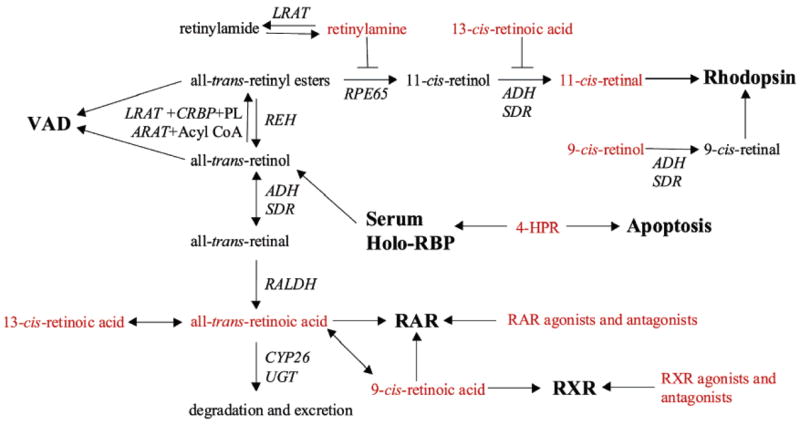Figure 2.

Targets of retinoid treatments. Both all-trans-retinol and all-trans-retinyl esters (palmitate) are effective in the treatment and prevention of vitamin A deficiency (VAD). The reconstitution of rhodopsin with 9-cis-retinal forms isorhodopsin and is an effective means of restoring visual function in several models of Leber congenital amaurosis (LCA). Inhibitors of the visual cycle, retinylamine and 13-cis-RA, can slow the rate of 11-cis-retinal formation in cases where excessive activation of rhodopsin can lead to phototoxicity and accumulation of all-trans-retinal and toxic metabolites as seen in Stargardt disease and age-related macular degeneration. A similar result can also be obtained with N-(4-hydroxyphenyl)retinamide (4-HPR or fenretinide), which binds RBP and leads to its excretion through glomerular filtration. Retinylamine can be amidated by the LRAT enzyme, allowing for the storage of the drug in an inactive form with lower toxicity. Independently of RAR, 4-HPR can lead to the apoptosis of tumor cells. RAR can be modulated by all-trans-RA, 9-cis-RA, and many synthetic agonists and antagonists. The retinoid X receptor can be modulated by 9-cis-RA and several synthetic agonists and antagonists. Both 13-cis- and 9-cis-RA can isomerize to all-trans-RA in vivo. The drug targets are shown in bold font, and the retinoids used in various therapies are shown in red font.
